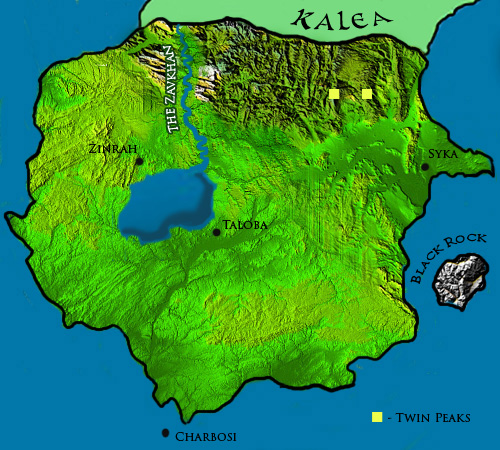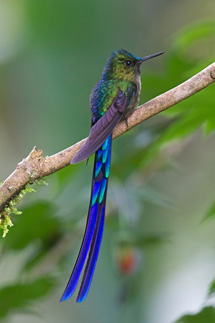Falyndar
From Mizahar Lore
| This article is about a location with its own forum to roleplay in. You can find it here. |
The region of Falyndar is filled with thick jungles and plenty of the most dangerous creatures in Mizahar. It is a region in which only the strong survive, and only the foolish venture unaware and unescorted. Despite the horrifying stories and ever apparent danger there are always those that try to make their way into the jungle. Sometimes for glory, sometimes for knowledge, following religion or tales, and they are faced with a place of unsurpassed beauty and diversity, but very rarely do strangers live long enough to appreciate the myriad of gifts that Falyndar has to offer those resourceful enough to survive the jungle's trials. Ruled by Myri, overseen by Caiyha, Navre, and Makutsi among other deities, Falyndar is a place of monsters, Gods, history, destruction, life, and wild beauty. We welcome you with open arms traveler, just watch where you step.
Contents |
History
Before the Valterrian, the region that was Falyndar was actually the southwestern area of the Suvan Empire. Inhospitable and untamed, the people of Suvan left it alone after attempts to explore it failed miserably. But there were always stories... stories of savage cannibals that sowed the jungle floor with blood, where screams of both agony and triumph rent the air at any given time.
Eventually stories emerged outside of it, told around flasks of booze in taverns by ragged explorers who had stared death in the face. "They... they ate Jacobi... ate him alive."
Vicious, bloodthirsty tribes roamed the jungle, and they battled each other constantly. It was a state of war - no tribe held dominion over any other. They killed each other over territory, over pride and respect, over resources. One tribe eventually gained, and held, control over the area. A new capital, Taloba, was established in the middle of the jungle, and its leader was supposedly favoured by a number of gods.
The Myrian population was severely diminished after the Valterrian - going down from as high as perhaps 65,000 at some estimates to only about 12,000. The survivors set to work rebuilding Taloba, and exploring what had become of their jungle. What had been troublesome before was truly nasty now, and the Myrians discovered, much to their shock and anger, that other races had set up camp in their ancestral home. This they would not stand for, and set to work purging the jungle of these intruders. The wolfish Tupahi, the slender Ukantsu, the purple-skinned Waorori, the winged Jollai, the wizened Pepao, and the reptilian Gwanah... one by one, they were hunted, down to the last, and destroyed.
The Charodae wisely chose to stay away from the land, living far below the surface of the water rather than provoke the dark-skinned warriors into genocide; the small population of the Dhani in the northwest has shrunk considerably, consisting of only a few hundred individuals. They bide their time, safe under the uneasy truce broked between Caiyha and Myri on behalf of Siku, but the Myrians will not rest until the jungle is theirs again.
Geography and Climate
Falyndar is known for its rain forests, dense often wet foliage that is just as thick in the canopy as it is in the under story, but while newcomers or outsiders know the region for these thick forests, it has a number of biomes that further expand the diverse myriad of flora and fauna that span the region. They are as follows:
- Chaparral - Though almost all of Falyndar is often drenched in rain, the exception is its Northeast Peninsula and the area directly surrounding Syka. The massive amounts of rain are held in and above the Cloud Forests of the Region for most of the year, but from Late Spring into Early Fall when monsoons wrack the region, the rains are swept in a South Westerly direction, focused on filling The Zavkhan and centering over the Kandukta Basin. This leaves its North Eastern corner, elevated enough not to get plentiful seasonal rivers and streams to water its shores getting the least amount of rain in the region, catching the tail end of the monsoons in the beginning of Fall. The plants here are hardier, and drought deciduous. Instead of large tall trees the land is covered with thick shrubs, and shorter stockier plant life.
- Cloud Forest - Only found in the Northern most climbs of Falyndar leading towards Kaleas mountainous region, Cloud forests stretch up to the sky. They are marked by their 100% humidity and as the name suggests being permanently inundated with rain and the clouds and fog that bring it. The Cloud Forests hide and protect Falyndar's rarer plants and animals, sometimes hunted by intrepid Myrians seeking to prove themselves, but more often than not just sought out in order to witness Caiyha's beautiful creations tucked so carefully away. Though Falyndar's highest elevations are nothing compared to the soaring peaks of Kalea, Falyndars' largest peaks are referred to as the Twins and nestled in between them rests the Tear of the Clouds, a temple devoted to Caiyha
- Mangrove - All along Falyndars' coast, one will find extensive mazes of mangrove forests and swamps as well as the creatures that inhabit them. These networks of trees house unique plant and animal life and support a coastal ecosystem all their own.
- Wetlands - Found most often around the Kandukta Basin, but also common to the west of Zinrah wetlands often house sections of flooded forest which can be seasonal coming with the Monsoons, but Falyndar houses several permanent sections of flooded forest and jungle that creates a unique mixture of aquatic and terrestrial dwelling for plants and animals of the jungle.
The temperature for the entire region save Black Rock is always hot and wet, though temperatures dip slightly if one makes the climb into the Cloud Forests in the North, and the heat is drier in the Northeast when one leaves the thick rain forest. Seasons blend together and are generally marked by the monsoons that hit from mid to late Spring into the Early Fall. This period of heavy rainfall shifts the landscape of Falyndar quite entirely. The Northern Pass leading down from Kalea is flooded, turning what is ordinarily the very slight entity of The Zavkhan River, into a massively wide channel (4 bull Tskanna is the impromptu measurement) that flows directly into the Kandukta. During this time the Kandukta itself floods heavily, creating many other seasonal rivers and channels that lead all over the region and at the height of Monsoon season many Myrians bring light canoes on most of their travels, as many places are filled with water, making it easier to use boats or rafts than traverse on foot.
Places of Interest
Demographics and Politics
Despite the number of Gods who inhabit, or regularly visit Falyndar, the de facto ruler of the region is the Goddess-Queen Myri. She rules from Taloba, the home of the Myrians. The Myrians severely outnumber the other races of Falyndar, and their numbers are continuing to grow. The Dhani are ruled by their Queen Snhamtanabis in Zinrah. Dira has total control over Black Rock, and is a close ally of Myri. The Charodae have their own council deep within Charbosi.
Native Peoples
After the Valterrian, Falyndar became home to almost a dozen different peoples, all of them new... except for one. Now, only three native races remain, two of which exist in a constant a struggle to survive the harsh realities of the jungle. Black Rock acts as a strange melding pot of races and Ghosts that defies Falyndars harsh rivalries somewhat.
Falyndar's peoples are the following:
Travel
There is no easy way to get into the heart of Falyndar. Traveling down the Northern Pass, whether on foot or down the Zavkhan River during Monsoon season is dangerous at best. While it is fairly easy to dock at the Eastern Docks, after being receiving by the Clan of the Leaping Fish, it is a long journey through dangerous and thick terrain in hot humid weather to reach Taloba, even more difficult if one lands somewhere else on the coast and tries to make their way through the Mangrove Swamps before getting into the Rainforest itself. Both Dhani and Myrians, though not often inclined, can make good wages acting as guides for those wishing to traverse the region, and this is the easiest way for an outsider to get into the city. If going alone one needs copious amounts of wilderness survival, and some combination of hunting, combat, and land navigation skills in order to survive their travels through the dangerous jungles of Falyndar.
Wildlife
Falyndar is home to an incredible expanse of wildlife, from the smallest bugs to the massive Tskannas. It is not unusual to start the day, or retire in the evening, to the screams of the wild predators, or the flock calls of the beautiful parrots and birds that reside throughout the thick jungle. Colorful frogs appear one moment, and are gone the next, leaving one wondering just where it disappeared to. Lazy-looking, mossy creatures can sometimes be spotted dangling from limbs in the canopy. A pair of feline eyes might glow in the dark, watching from the shadows, waiting for the unwary to rest for the night. A bird call may belong to a bird... or it may not. Many a Myrian has happened upon an explorer that way, confusing them as their enormous mounts catch them unawares.
Many species, both plant and animal, in Falyndar have experienced dirism as a result of the Valterrian. While these creatures may have been enormous in their own right, these monsters are huge, and hunting them is considered a great honor and proof of one's skill.
- Falyndar Fauna List
Plant Life
Because of the unique ecosystem in Falyndar, there are numerous plants that cannot be found anywhere else. Often brightly coloured, they catch foreigners by surprise with their toxicity. The qallos fruit, for example, looks like perfectly normal cherries, only to be deathly poisonous to non-Myrians. Many types of plants have different flowering seasons, and Myrians are constantly harvesting and collecting new and unique fruit and fauna from season to season.
- Falyndar Flora List
| Out of character note: If you are looking to travel to Falyndar please contact a local moderator in the region in order to determine a realistic and hopefully non-deadly way to arrive at your desired destination. |




